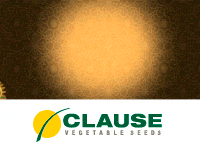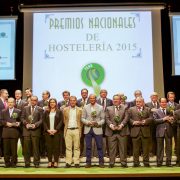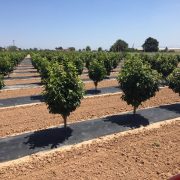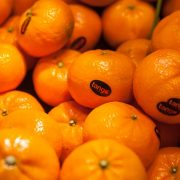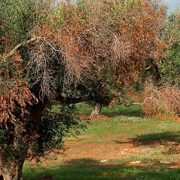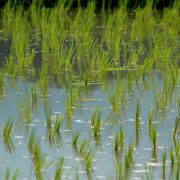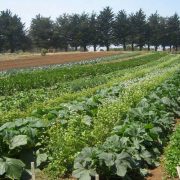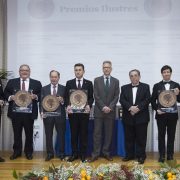Spain: persimmon crop details
Bayer has brought together more than 300 technicians, researchers, producers and farmers to discuss the future of persimmon cultivation in Spain, a country that almost tripling its production of persimmon in five years to reach 650,000 tons. 90% of Spanish persimmon is grown in Valencia.
The persimmon has become one of the fastest growing crops has experienced in recent years in Spain. There are now more than 6,000 farmers producers of this fruit. According to the Protected Designation d’Origin Kaki Ribera del Xúquer in 2010 was 12 million kilos of persimmon produced in Spain, in 2015 the harvest exceeded 240,000 tons and most of this production is exported. In total, last year exports exceeded 160,000 tons being present in 48 markets. One of its main advantages is the high price that this product reaches destination, especially in foreign markets.
Persimmon cultivation in Spain occupies an area close to 17,000 hectares, of which nearly 90% are in Valencia, promoter region of this crop surface.
To discuss the future of this product, Bayer CropScience division has held the First Forum Persimmon in which involved nearly 300 producers, researchers and technicians from all over Spain. This meeting seeks to promote technology transfer between the scientific community and farmers.
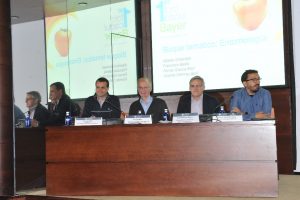 The forum has been divided into six thematic blocks around this fruit: Entomology, Pathology, Machinery, Market-Export Varieties and Bayer Solutions.
The forum has been divided into six thematic blocks around this fruit: Entomology, Pathology, Machinery, Market-Export Varieties and Bayer Solutions.
Alberto Urbaneja, Coordinator of the Center for Plant Protection and Biotechnology Valencian Institute of Agricultural Research (IVIA) has opened dedicated to entomology talking about the “Tuning a program of integrated pest management in Khaki” block. During his talk he explained the latest developments in the management program integrated into the product in which it is currently working on IVIA.
Urbaneja has used this forum to launch the portal www.gipcaqui.ivia.es, a portal developed in collaboration with Bayer Chair and collect all the innovations in the development of this program.
Francisco Beitia, a research scientist IVIA has spoken of the “Species cotonets present in khaki and importance of correct identification,” said the sharp increase in the production of persimmon in recent years has unfortunately accompanied by an increase in pests that affect them. In this regard, he said it is important to identify the specific pest species for a more effective treatment. He also noted that in their investigations, have recently detected a new pest Delotococcus Aberiae, you can even create problems for exporters.
Meanwhile, Ferrán García, Professor at the Polytechnic University of Valencia (UPV) explained the “On Line Monitoring Network (UPV-BCS) pests and natural enemies in Khaki: 2015 results”. A network that is available to farmers through the web Bayer Agro services.
Vicente Dalmau, Chief of Plant Health of the Generalitat Valenciana, has spoken of the New pests in the cultivation of persimmon, such as whitefly, and alternatives to its control. He asserted that this plague, which sucks the sap and weakens the tree while generating bold and therefore lowers the commercial quality of the fruit began to be a problem in 2015.
In his talk Dalmau has given recommendations to control this pest and has ensured that during 2016 will continue prospecting to ensure that no new affected areas and testing the effectiveness of different products in their treatment.
In block intended for pathology, Antonio Vicent, a researcher IVIA has spoken of the main fungal diseases Persimmon and pointed out some strategies to control them. In conclusion, he noted that although Persimmon phytosanitary situation in Spain is optimal compared to other countries, its expansion increases the risk of introducing new diseases. Therefore, he assured that the responsibility is the best ally in this case.
With respect to block machinery, Patricia Chueca, researcher at the Center Agroingeniería the IVIA, it recently conducted on “Improving the efficiency of phytosanitary treatments in khaki”. In this context, it stressed that this effectiveness will depend largely on the weather, the evolutionary state of the pest and application equipment.
Focusing on application equipment, it has highlighted the importance of calibration of equipment (speed, suitable pressure, number and orientation of the nozzles or air flow selection). He has also spoken of solutions ranging precision detection of trees or the importance of adjusting the volume of application depending on the vegetation, the pest or the product used.
A production of 650,000 tons in 2020
In Spain in 2015 there were about 240,000 tons of persimmon. By 2020 that figure is expected to rise to 650,000 tons. The main challenge presented, according to Rafael Perucho, manager of the Protected Designation d’Origin Kaki Ribera del Xúquer, is to make the commercialization grow at the same rate as production.
What is clear today is that for the vast majority of consumers who know him, persimmon is a good or very good product. Almost 80% buy by taste and almost 90% are willing to repeat the purchase. The biggest problem is the lack of this fruit. For example, in Germany, the main foreign market, only 30% of consumers know and of that percentage, 50% buy it. In Spain knowledge reaches 60%.
Francisco Borras, vice president of Anecoop, said that the persimmon is a product that, in general, at international level, little is exported. Spain is the exception since 70% of the production is sold out, thanks to Persimon. An own brand of O.D. protected Kaki Ribera del Xúquer has led to khaki to become autumn fruit. He also noted that very often, when the fruit enters the home, is to stay.
Given the avalanche of production expected in five years, Borras has identified a series of measures to manage effectively: segmenting quality, diversify presentations, consolidate a five-month campaign and open new markets.
New varieties development
Drs Marisa Naval Sea Badenes and exposure have focused on varieties of persimmon. The dra. Badenes noted that currently the IVIA is working on two strategies to increase the number of varieties to limit the current dependence on a single variety, Bright Red. On the one hand, you achieve them through non-astringent fruit that coexists with Bright Red variety and other genetically improve this variety to achieve others that are more late or earlier.
The dra. Naval recently conducted any of the current problems of this crop and soil salinization or cross-pollination that can produce seeds in the fruit and thus diminish their commercial value.
Finally, Santiago Cerdá, head of Fruit-Growing agricultural division of Bayer, has spoken of new solutions in which the company is innovating to meet the needs of these producers Movento® insecticide, fungicide Flint® or phytoregulator Fruitel®.
Source: Bayer





